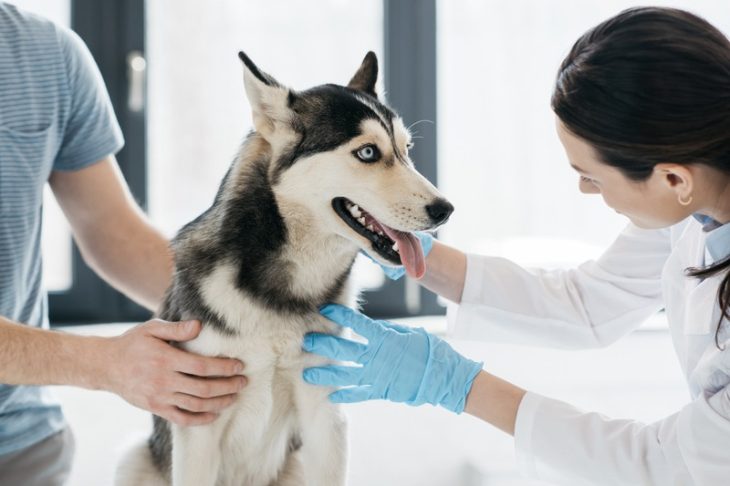In the world of veterinary medicine, technological advances have given us incredible tools to care for our four-legged family members. As pet parents, we are always looking for safe and effective ways to treat our pets when they’re in pain or suffering from various conditions. One such innovation that’s gained popularity is cold laser therapy. It’s a non-invasive treatment option that’s being utilized for a range of health issues in both puppies and kittens. But what exactly is it good for? Let’s explore the conditions in these young pets where cold laser therapy shines.
Common Conditions Treated in Puppies
Our little furry friends can often tumble and end up hurting themselves. Sprains or strains are quite common in playful puppies, and cold laser therapy can significantly reduce the pain and inflammation associated with these injuries. It’s not all about the accidents, though. Here are some conditions where cold laser therapy can help our canine companions:
-
Skin Infections: Puppies are prone to skin issues like hot spots or impetigo. Cold laser therapy can enhance tissue repair and act as an anti-inflammatory agent.
-
Post-surgery Recovery: After a surgical procedure, cold laser therapy can promote cell regeneration and speed up healing, getting your puppy back on its paws much quicker.
-
Growth Abnormalities: Some puppies may face growing pains or conditions such as hip dysplasia. Cold laser therapy can aid in managing pain and encouraging proper tissue formation.
-
Dental Health: Puppies may experience teething pain or gum inflammation, and targeted cold laser therapy can soothe oral discomfort.
Moreover, puppy and kitten vet specialists often recommend cold laser therapy as part of a rehabilitation plan for young dogs who have had accidents and are in recovery. It’s important to get them back on track without relying too much on medications, especially at such a formative age.
Common Conditions Treated in Kittens
Kittens, while known for their independence, are just as susceptible to health issues that can benefit from cold laser therapy. Here are some areas where our feline babies can be helped:
-
Wound Healing: Whether it’s from an overzealous play session or an outdoor adventure gone wrong, kittens can get cuts and wounds that cold laser therapy can help heal faster.
-
Musculoskeletal Issues: If a kitten suffers from congenital conditions or injuries that affect their muscles or bones, cold laser therapy can decrease pain and promote recovery of the affected areas.
-
Dermatitis: Kittens can have allergic reactions or develop skin diseases. Cold laser therapy can reduce the inflammation and itching associated with dermatitis.
-
Respiratory Infections: Some vets also use cold laser therapy to reduce the symptoms of certain respiratory infections, potentially lessening the severity and duration of the illness.
The adaptability of cold laser treatments makes them versatile tools, particularly handy in treating delicate young pets. However, it’s always crucial to ensure that these treatments are carried out by professional veterinary staff. A Corpus Christi emergency vet could offer invaluable assistance by providing cold laser therapy in instances where your pet needs immediate pain relief or assistance in healing.
How Does Pet Cold Laser Work?
Understanding how pet cold laser therapy works is pretty straightforward. During a session, a veterinarian will use a handheld laser device over the injured or affected area of your pet’s body. The light emitted by the device penetrates through layers of tissue to stimulate cell regeneration and increase blood circulation. It’s totally non-invasive, doesn’t require any shaving or hair removal, and is painless for the animal.
Typically, a single session can last anywhere from a few minutes to half an hour, depending on the size of the area being treated and the specific condition. Pets often seem more relaxed after a session, and many show noticeable improvements with consistent treatment.
Factors to Consider
Before jumping into any treatment, it’s essential to have a thorough discussion with your vet. Here are the key factors that you should consider:
-
Age and Size of Your Pet: As your pet is growing, the treatment parameters may vary. A skilled vet will adjust the therapy to suit your pet’s size and developmental stage.
-
Severity of the Condition: More severe or deep-seated conditions might require more frequent sessions or longer treatment times.
-
Underlying Health Issues: If your pet has any pre-existing conditions, these need to be considered to ensure cold laser therapy is a safe option.
Lastly, while cold laser therapy is a promising treatment for many ailments, it’s not a one-size-fits-all solution. Your vet will be the best guide to diagnose whether it’s the right choice for your pet’s specific needs and circumstances.
Final Thoughts
Cold laser therapy is beneficial for puppies and kittens with health issues, improving wound healing and relieving pain. It’s become a popular choice among veterinarians. In emergencies or for check-ups, contact a local vet who can provide this therapy to help your pet. Consult with your vet to determine if cold laser therapy is right for your pet’s needs.



